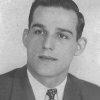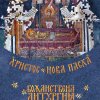MIGRATIONS
Serbian people and the Church suffered heavy consequences during and after the Austro-Turkish war when the throne of Pec was occupied by Patriarch Arsenije III Carnojevic (1674-1690; +1706, Charnoyevich). In 1683 Turks arrived at the threshold of Central Europe by besieging the City of Vienna itself. A relief army arrived from Poland, lifted the siege, and general Piccolomini drove the Turks back all the way to Skoplje in Macedonia. This victory encouraged the Serbs and the Patriarch himself to join the Austrians. However, a successful Turkish counteroffensive forced them into the so-called “Great Migration”, Patriarch Arsenije led some 40,000 men, women and children north of rivers Sava and Danube. Austrian Emperor Leopold I had agreed to accept this large wave of refugees and to extend written guarantees of religious and national freedoms to them. Subsequent history of Serbs in Austria and Hungary was marked by their struggle to effectuate their guaranteed freedoms, since Austria, as a Roman Catholic state, did its utmost to denationalise and convert Orthodox Serbs living on her territory.
During the following Austro-Turkish war of 1737-1739 Serbs, unfortunately, suffered a similar fate. Patriarch of Pec Arsenije IV Jovanovic-Sakabenta (1728-1737, Yovanovich Shakabenta) prematurely hoped that final freedom could be achieved soon and consequently decided to lead his people to revolt against the Turks. Austrian support fell short and he was forced to lead yet another great wave of refugees north of rivers Sava and Danube. This time Turkish revenge was even more ruthless than before. Monasteries and churches were torched, Bogorodica Ljeviska of Prizren was turned into a mosque, monastery Manasija church was turned into a horse stable, and great numbers of Serbs were taken into slavery to be sold in slave markets of Europe and Asia. There also occurred another great wave of forcible conversions to Islam …
If a question is put as to how the Church survived under Turkish rule at all, it could be easily answered that the Church had to suffer the same fate as the ordinary Serbian folk. As in all Islamic states Christians in Serbia had lesser rights than Mohammedans (which is a case even today in Islamic countries). There were very few priests and monks, churches and monasteries. According to Islamic laws Turks did not allow new churches to be built and allowed old ones to be restored only with great reluctance and numerous obstructions on their part. Many churches were turned into mosques and some had been torn down, the remaining building material being used to build mosques or public buildings. People were allowed to gather in churches and monasteries only on rare occasions and priests and monks could openly satisfy people’s religious needs only by special permission. This caused such a situation where heads of families had to assume roles of domestic priests in their families. This is why the celebration of the family baptismal, or patron saint day, (Krsna Slava) assumed great importance in Serbian tradition — it came as a sort of substitute for all other religious practices. Normal ecclesiastic tradition was often substituted by a practice of local popular customs.
Only monasteries that survived, apart from the most famous ones founded by members of the Nemanjic dynasty, were those that had originally been built in remote, inaccessible regions. During times of relative calm, main monasteries remained strong spiritual centres even under Turkish rule and were given some sort of autonomy in exchange for annual payments of taxes to the authorities. People went on pilgrimages to venerate the remaining relics of national saints — those of St. Simeon in Studenica; St. Sava in Mileseva; St. Stefan Decanski in Decani; Holy Knez Lazar in Ravanica; those of saints belonging to Brankovic dynasty in Krusedol etc. Regular Church services were carefully observed in all these monasteries and most of the monks were at least semi-literate, doing their utmost to spread literacy among people whilst tutoring them on faith and spiritual life. They spoke of and wrote about the glorious Serbian past and their grand and most significant rulers and predecessors. Except for the above mentioned national saints, centuries of reverence were also devoted to St. Paraskeva, St. Joanikije Devicki, St. Basil of Ostrog and others.
In such difficult times only priests and monks were able to do anything to promote spirituality and culture in general. Thus, hieromonk Macarius was able to procure in Venice a printing press for Djuradj Crnojevic (George Tsrnoyevich) in Cetinje (Cetinye). It was in use from 1493 to 1495 and became renowned for the first printing press among the South Slavs. Sometime later, during the first half of 16th century, printing presses were also in use in other Serbian monasteries such as: Rujan (1537), Gracanica (1539), Mileseva (1544), Mrksina Crkva (1566) etc. Wherever and whenever it was possible, manuscripts and illuminations continued to be produced.
As far as church building and fresco painting were concerned, previously very rich donating activity was greatly diminished during Turkish rule. That which was accomplished was done according to relatively limited means of contemporary donators. Iconography was mainly based on imitations of older art, although there were several very talented iconographers as, for example, Longin or Georgije Mitrofanovic (George Mytrophanovich).




